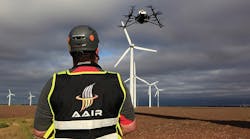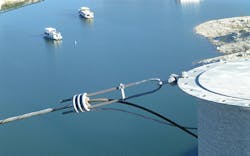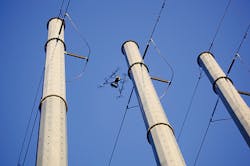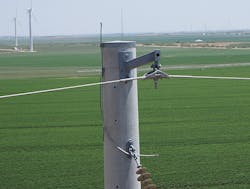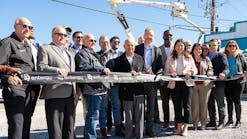Unless you have been living under a rock for the last few years, you have no doubt figured out that we are in the midst of a “drone revolution.” It seems these days, everywhere you turn, the technology for unmanned aerial vehicles or systems (UAV or UAS) is pushing its way into the mainstream of our society.
Amazon, Google and Facebook are brands recognized around the globe, and they are all becoming heavily invested in drones. Now that the Federal Aviation Administration (FAA) has created a pathway to legalized commercial use, even more drones are taking to the skies. The number of industries capitalizing on this new technology is growing, and the list of potential applications for UAS appears to be limitless. Whether you are a small startup or a multibillion-dollar enterprise, you cannot afford to ignore the drone movement.
The idea of having a package delivered to your doorstep via UAS seems like science fiction, but it is actually closer to reality than you may think.
In 2013, Amazon announced that testing was underway at a secret facility in Canada for its UAS delivery service, Prime Air. The firm was recently granted permission by the FAA to begin testing in the United States. Delivery via drone could be just around the corner.
The film industry is also making use of this technology for evermore-captivating aerial footage for their blockbuster movies. Even farmers can save big on labor and material costs by deploying UAS out in their fields. Imagine not needing to spray entire fields with pesticides or fertilizers. Now they can monitor individual plants among millions in a field and precisely target which ones need attention using the aerial imagery provided by UAS. The reduction of wasted materials will be enormous, and the effect on their bottom line is undeniable.
Agriculture, security, mining, real estate, and search and rescue represent just a few of the many industries primed to take advantage of the value of these unmanned systems.
Utility Drones
But for all of us electrical utility geeks, there’s an obvious question: Does this technology have a place in the realm of utility operation and maintenance (O&M)? The answer is unequivocally yes!
UAS technology is still very much in its infancy, but it is already being applied in various forms for utility companies. Inspections on overhead lines, substations and generation facilities are well within the equipment’s current capability. Volumetric analysis on coal piles, mapping and surveying of rights-of-way, and security are also being considered as viable applications. If you think about the current state of the utility infrastructure in the U.S., the need for more affordable inspection methods has never been more apparent. The U.S. electrical grid is critical for the functioning of a civil society. Its reliability remains a top concern for government agencies as well as for asset owners and operators.
Unfortunately, many transmission structures have either reached or passed their expected design life. At this advanced age, the risk of catastrophic failure increases significantly, and replacing all assets, once they hit this threshold, is simply not an option. Unexpected failures and outages can have a tremendous impact on the community, both financially and from the standpoint of safety. Conditional assessment of these assets is always the first step in upgrading the system and that is where UAS are ready to hit the stage.
Smarter Drones
One of the many attractive features of UAS is the flexibility and versatility they possess in terms of the various payloads they can carry. Anything from high-resolution digital and thermal cameras, to Light Detection and Ranging (LiDAR) and geographic information system (GIS) sensors are now capable of being equipped onto a UAS platform. The extreme clarity of close-up photography of a tower could show an engineer how badly a weld is cracked or how much corrosion has built up on hardware attachments or insulators.
Drones equipped with forward-looking infrared (FLIR) or ultraviolet sensors can detect hot spots or corona discharge on conductors and insulators, signaling a potential defect or weakness in the component. LiDAR can be integrated with drones to survey a proposed right-of-way or monitor encroachment by vegetation. And this is just the tip of the iceberg in terms of potential uses for utilities.
The next phase of UAS technology will employ “smarter” machines that can fly autonomously. They will sense and avoid other objects in their path, recognize features or components through complex software algorithms, and achieve a situational awareness. This advanced technology will be able to foster calculated decision making, such as initiating a focused inspection, issuing a work order for repairs, or perhaps someday executing a repair on its own.
These notions may sound absurd, but just a decade ago, the concept of self-driving cars seemed only possible in the movies. Now Google is testing a fully autonomous car that it plans to make available to the public consumer within the next five years. Flying robots built for utility O&M can’t be too far behind.
Of course, much of the allure created by UAS today revolves around its “wow factor” as the newest trend in amateur aviation. However, the truth is that once the enamored enthusiast grows tired of this shiny new toy and moves on to the next big breakthrough in high-tech gadgetry, the fundamental value proposition of unmanned systems offered up to industry will remain.
Safety and cost are two of the most significant drivers in any business, and that is especially true for utility O&M. Many industrial work areas are hazardous in nature. While we can try to mitigate the risks as best we can, the truth is that accidents will always happen.
Working on energized high-voltage transmission lines, sometimes hundreds of feet up in the air, can make the consequences of a mistake turn deadly. According to the Bureau of Labor Statistics, 15 linemen were fatally injured in 2013 as a result of “exposure to harmful substances or environments.” Unmanned systems have the potential to greatly reduce the amount of risk exposure placed upon the operational workforce. The value of even one human life saved as a result of this new technology is priceless.
Lifesaving Drones
While the enhancements to safety are undeniable, the cost-effective nature of UAS is becoming more apparent, as well. Like any technology, as it matures, the associated costs decline. More players are jumping into the market with new innovations, making the cost of application for utilities more affordable. Couple this fact with the efficiency gains achieved through the use of UAS and the overall cost-effective nature of unmanned systems becomes clear.
Controlling labor expense, eliminating the need for cost-prohibitive cranes or full-size aircraft, and reducing asset downtime and outages are all by-products of this technology that go straight to a line owner’s bottom line. It is hard to argue against a movement where the tag line is “Saving lives and cutting cost!” It really is a no-brainer for the industry. This is why the FAA, under pressure from Congress, has finally started to loosen its death grip on commercial operations.
Since 2007, the FAA effectively banned the use of all commercial UAS operation. The decision confounded many since amateurs and enthusiast could go out and fly the exact same aircraft for fun without any regulation at all. The agency decided to take an all-encompassing approach to regulating this new technology. The only problem with this approach was that rules governing a Global Hawk or MQ9 Reaper don’t exactly mesh well with a 5-lb (2.3-kg) remote-controlled helicopter armed with a GoPro camera. Thankfully, the FAA recognized this dilemma and began carving out special regulations for smaller UAS weighing less than 55 lb (25 kg).
In the last year, the FAA has approved more than 700 commercial entities to begin UAS operations under strict operating guidelines, which means that U.S. airspace is finally open for business. And that is good news for everyone, especially utilities.
Grant Leaverton joined Advanced Aerial Inspection Resources in August 2013 to help lead an initiative centered around the development and integration of unmanned systems into the realm of infrastructure asset inspection. With a background in utility structures manufacturing, he was drawn to the opportunity to work within a new and burgeoning technology renaissance related to unmanned aerial systems (UAS) and their particular relevance to utility transmission and distribution operational challenges. Leaverton continues to work towards a broad integration of UAS within a variety of key infrastructure- and energy-related fields.
